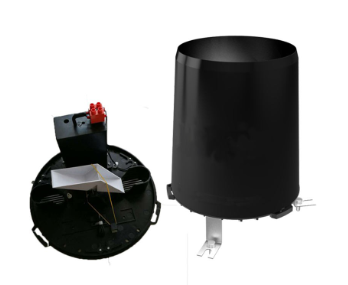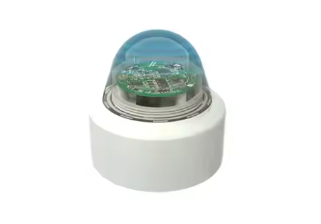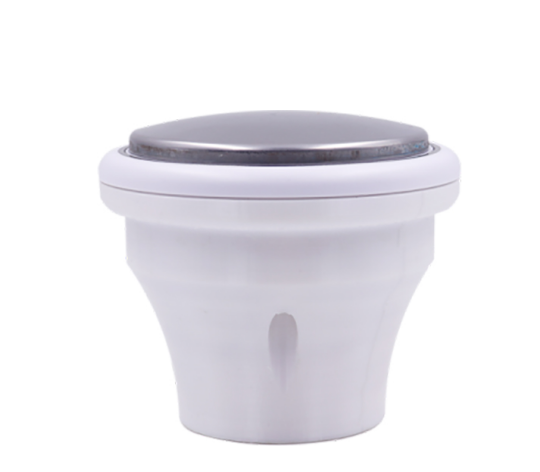In the fields of meteorological observation and water resources management, rainfall sensors are like a silent guardian, with their accurate measurements and reliable data, for us to uncover the mystery of natural precipitation.
A rain sensor is a high-tech device used to measure rainfall. Its appearance greatly improves the accuracy and timeliness of rainfall monitoring, and provides vital support for many fields such as weather forecast, hydrology research and agricultural production.
Working principle:
It is composed of water bearing device, upper tipping bucket, measuring tipping bucket, counting tipping bucket, etc. Rainwater enters the upper skip through the water carrier. When the rainwater accumulates to a certain amount, the upper skip turns over and pours the rainwater into the metering skip. The tipping bucket is turned over once every time it reaches a certain amount of water, and the rainfall is measured by counting the number of turns of the tipping bucket.
Usually, the capacity of the metering tip is fixed, such as 0.1 mm or 0.2 mm of rainfall, so that the rainfall can be accurately calculated based on the number of times the counting tip is flipped.
Features:
The measurement accuracy is high and the stability is good.
The structure is relatively simple, easy to maintain and install.
Suitable for rainfall monitoring under various environmental conditions.

Working principle:
The principle of light scattering, transmission or reflection is used to measure rainfall. When a raindrop passes through a beam, it causes a change in the intensity, frequency, or phase of the light.
By detecting these changes, and through signal processing and algorithm calculation, the amount of rainfall is obtained.
Features:
The response speed is fast, and the change of rainfall can be monitored in real time.
No mechanical parts, high reliability, not easy to damage.
The precision is higher and less affected by external environmental factors.
However, the cost is relatively high, and there are certain requirements for the installation and use environment

CDY-15A Rain Sensor Optical
Working principle:
The piezoelectric rain sensor is mainly composed of vibration element and signal processing circuit made of piezoelectric
material. When raindrops hit the vibration element of the sensor, tiny mechanical vibrations are generated. Because the
piezoelectric material has the piezoelectric effect, that is, it generates an electric charge when subjected to mechanical stress,
the piezoelectric material on the vibrating element converts the impact of the raindrop into an electrical signal. The signal
processing circuit amplifies, filters and digitizes these electrical signals to obtain rainfall information.
Features:
High accuracy: The impact intensity and frequency of raindrops can be accurately measured, thus accurately calculating rainfall.
High sensitivity: The impact of tiny raindrops can also produce obvious electrical signals, suitable for measuring light rain and
trace rainfall.
Fast response: It can monitor the change of rainfall in real time, and the response speed is fast, which can provide timely rainfall
data.
High reliability: no mechanical moving parts, not susceptible to wear and damage, long service life.

CDQ-T1C-X100 Piezoelectric rain sensor
1. Environmental monitoring
Ecological environmental studies: Rainfall data plays a key role in studying the water and material cycles of ecosystems. Through long-term monitoring of rainfall in different ecological regions, we can understand the impact of precipitation on vegetation growth, soil moisture, river flow, etc., and then assess the health and stability of ecosystems.
2. Construction field
Architectural design: During the architectural design process, it is important to consider the local rainfall conditions for the drainage system, roof structure and waterproof design of the building. Rainfall sensors can provide accurate rainfall data to help designers determine the appropriate drainage slope, rainwater collection system capacity and waterproof material selection to ensure the safety and durability of buildings under different rainfall conditions.
3. Energy sector
Hydropower: Rainfall directly affects river flow and water level, which has a significant impact on hydropower production. The rainfall sensor installed near the hydropower station can monitor the rainfall in real time and provide the basis for the operation and dispatching of the hydropower station. By combining rainfall data and reservoir level information, the power generation plan of hydropower station can be optimized, and the power generation efficiency and economic benefit can be improved.
4. Emergency rescue
Flood disaster early warning: In areas prone to flood disasters, rainfall sensors can be used in conjunction with water level sensors, weather radar and other equipment to achieve real-time monitoring and early warning of flood disasters. When the rainfall reaches a certain threshold, the early warning system can issue alarms in time to notify relevant departments and residents to take hedging measures to reduce casualties and property losse
Select the installation location:
Choose an open, unsheltered place to ensure accurate reception of natural rainfall. Avoid installation in the shadow of buildings, trees, or other obstacles that may affect the natural fall path of rainwater, resulting in inaccurate measurements.
Consider the stability of the installation site, and avoid choosing places that are prone to vibration or shaking, such as near traffic arteries or near machinery and equipment. It can be installed on a roof, a weather station or other relatively stable platform.
Prepare installation tools and materials.
Prepare required tools, such as screwdrivers, wrenches, and electric drills, based on the type and installation requirements of the rain sensor.
Prepare materials required for installation, such as expansion bolts, screws, gaskets, and sealants. Ensure material quality and specifications meet installation requirements
Install the sensor body:
Fix the body of the rain sensor in the selected installation position. The sensor can be securely secured to the mounting platform using expansion bolts, screws, etc. Ensure that the sensor is mounted horizontally to ensure measurement accuracy.
During the installation, protect the sensitive parts of the sensor to avoid collision or damage. Some rain sensors may need to be waterproofed to prevent rain from seeping inside and damaging electronic components. You can use sealant or waterproof cover for protection.
Mushroom cultivation requires a carefully contro
In today's fast-evolving agricultural landscape,
Coffee bean cultivation is highly dependent on s
Contact: Molly
Phone: +86-17775769236
Tel: 86-0731-85117089
Email: molly@codasensor.com
Add: Building S5, Aux Square, Yuelu District, Changsha City, Hunan Province, China
We chat